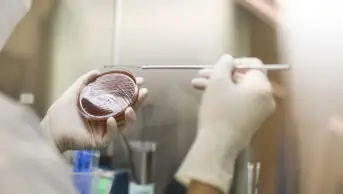Point-of-care testing for a biomarker of bacterial infection would help to limit unnecessary antibiotic prescribing by GPs, suggests a systematic review (Cochrane Database of Systematic Reviews, 6 November 2014)[1]
.
Data from six randomised trials assessing C-reactive protein (CRP) testing in patients with acute respiratory infection indicated that antibiotic use was lower among patients who were tested than in those who were not.
Rune Aabenhus, from the University of Copenhagen in Denmark, and colleagues compared CRP testing with no testing, as an adjunct to clinical examination, among 3,284 patients presenting to primary care with symptoms of acute respiratory infection.
Antibiotics were prescribed to 631 of the 1,685 patients (37.4%) who underwent CRP testing and to 785 of the 1,599 patients (49.1%) who received standard care only. The risk ratio was calculated as 0.78 (95% confidence interval 0.66–0.92), however, there was a high degree of heterogeneity. Because of differences in the designs of the included studies, the researchers say it was not possible to obtain a precise estimate of the reduction.
CRP testing did not impact rates of clinical recovery, mortality, re-consultation or hospital admission.
The researchers say that CRP testing seems to be safe, although they note that in one trial, based on a small number of cases, those who were tested were more likely to be admitted to hospital at a later date. “This result may have been a chance finding, but it does remind us that general practitioners need to be careful about how they use these tests,” Aabenhus remarks.
References
[1] Aabenhus R, Jensen J-US, Jørgensen KJ et al. Biomarkers as point-of-care tests to guide prescription of antibiotics in patients with acute respiratory infections in primary care. Cochrane Database of Systematic Reviews 2014, Issue 11. Art. No.: CD010130. doi: 10.1002/14651858.CD010130.pub2.


